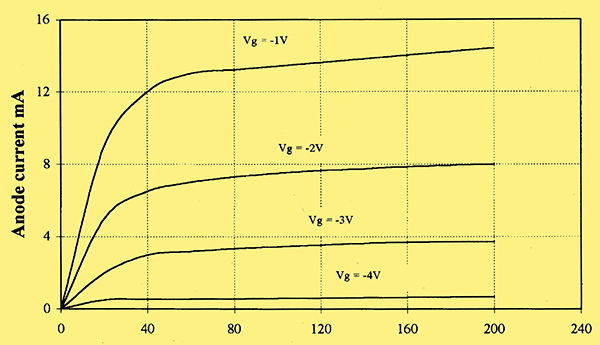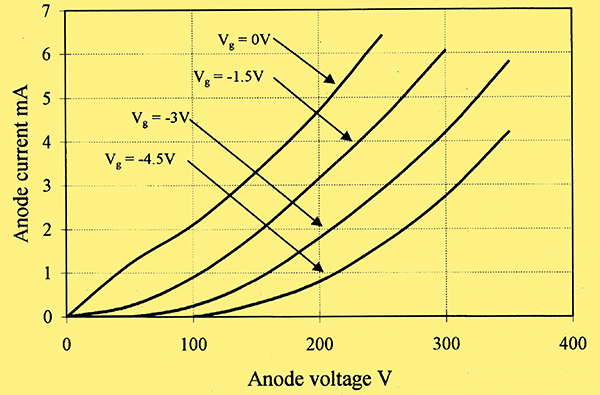|
Characteristics and Distortion
Graphs of the anode current versus anode voltage for various grid voltages for a small signal pentode are shown in Fig. A. These 'characteristics' are very similar to those of bipolar transistors and approximate to ia ∝ (1-ekVa). This leads to distortion by the introduction of odd harmonics spanning from low to high order.

Fig. A. V-I characteristic curves for a small-signal pentode. The curves represent the relationship between anode current and anode voltage for various fixed control grid to cathode voltages (Vg). The curves have similar shape to those of bipolar transistors and consequently pentodes have similar distortion characteristics to transistors.
On the other hand, the triodes anode IV characteristics, Fig. B, approximate to Ia ∝ Va3/2. This produces more distortion but it is mainly by introducing lower harmonics, principally 2 and 3 times the fundamental.

Fig. B. V-I characteristic curves for a small signal triode. The curves represent the relationship between anode current and anode voltage for various fixed control grid to cathode voltages, Vg.
In musical terms, these notes are the octave and dominant (fifth) notes of the fundamental key - the note being distorted. These notes are parts of the basic chord and sound musically harmonious.
Triode distortion sounds as though it belongs to the music and is difficult for the ear to detect. Even when it can be heard, it is not irksome and makes the sound 'richer'. Many audiophiles see this as desirable.
|